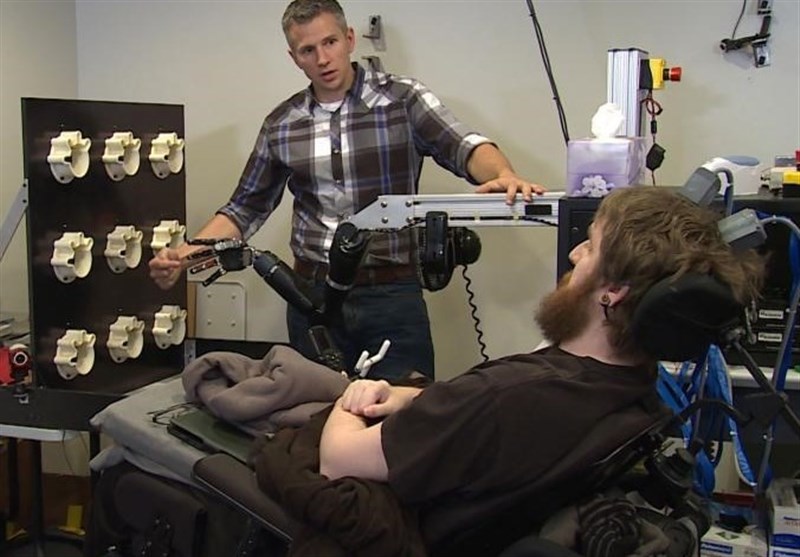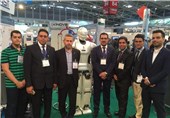Mind-Controlled Robotic Arm Gives Sense of Sensation to Paralyzed Man
TEHRAN (Tasnim) – A man rendered quadriplegic in a road traffic accident has regained sensations in his arms and fingers through a mind-controlled robotic arm connected to his brain.
Nathan Copeland, a 28-year-old resident of western Pennsylvania, was injured in 2004 but in the spring of 2015 had four microelectrode arrays implanted into his brain by neurosurgeon Elizabeth Tyler-Kabara.
Following surgery, Copeland was connected to a Brain Computer Interface (BCI) developed by researchers at the University of Pittsburgh and the University of Pittsburgh Medical Center (UPMC).
In a study published online in Science Translational Medicine, a team led by Robert Gaunt, Ph.D., assistant professor of physical medicine and rehabilitation at Pitt, demonstrated for the first time in humans a technology that allows Copeland to experience the sensation of touch through the robotic arm, the Engineer website reported.
“The most important result in this study is that micro stimulation of sensory cortex can elicit natural sensation instead of tingling,” said study co-author Andrew B. Schwartz, Ph.D., distinguished professor of neurobiology and chair in systems neuroscience, Pitt School of Medicine, and a member of the University of Pittsburgh Brain Institute. “This stimulation is safe, and the evoked sensations are stable over months. There is still a lot of research that needs to be carried out to better understand the stimulation patterns needed to help patients make better movements.”
In previous research Pittsburgh researchers demonstrated a BCI that helped Jan Scheuermann, who has quadriplegia caused by a degenerative disease. Prior to that, Tim Hemmes, paralysed in a motorcycle accident, reached out to touch hands with his partner.
They found that the constant feedback received from the sense of touch is of paramount importance as it tells the brain where to move and by how much. For Dr. Gaunt and the rest of the research team, that was the next step for the BCI.

They developed and refined their system such that inputs from the robotic arm are transmitted through a microelectrode array implanted in the brain where the neurons that control hand movement and touch are located. The microelectrode array and its control system, which were developed by Blackrock Microsystems, along with the robotic arm, which was built by Johns Hopkins University’s Applied Physics Lab, brought the system together.
“I can feel just about every finger — it’s a really weird sensation,” Copeland said. “Sometimes it feels electrical and sometimes its pressure, but for the most part, I can tell most of the fingers with definite precision. It feels like my fingers are getting touched or pushed.”
Copeland can currently feel pressure and distinguish its intensity to some extent, though he cannot identify whether a substance is hot or cold, said Dr. Tyler-Kabara, co-investigator and neurosurgeon who operated on Copeland. Prior to the surgery, imaging techniques were used to identify the exact regions in Copeland’s brain corresponding to feelings in each of his fingers and his palm.
Dr Gaunt said in a statement that everything about the work is meant to make use of the brain’s natural, existing abilities to give people back what was lost but not forgotten.
“The ultimate goal is to create a system which moves and feels just like a natural arm would,” said Dr. Gaunt. “We have a long way to go to get there, but this is a great start.”
The team describe their work in a paper titled Intracortical micro-stimulation of human somatosensory cortex.





